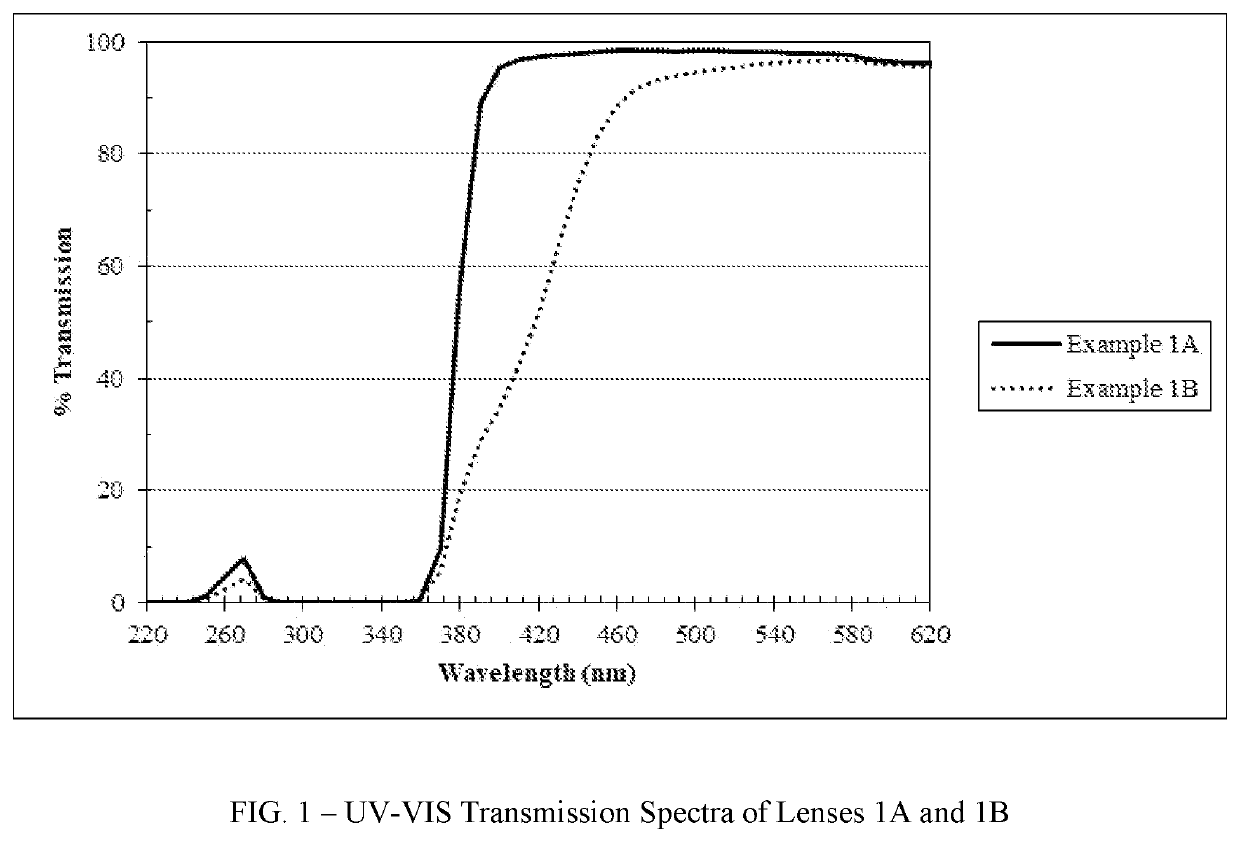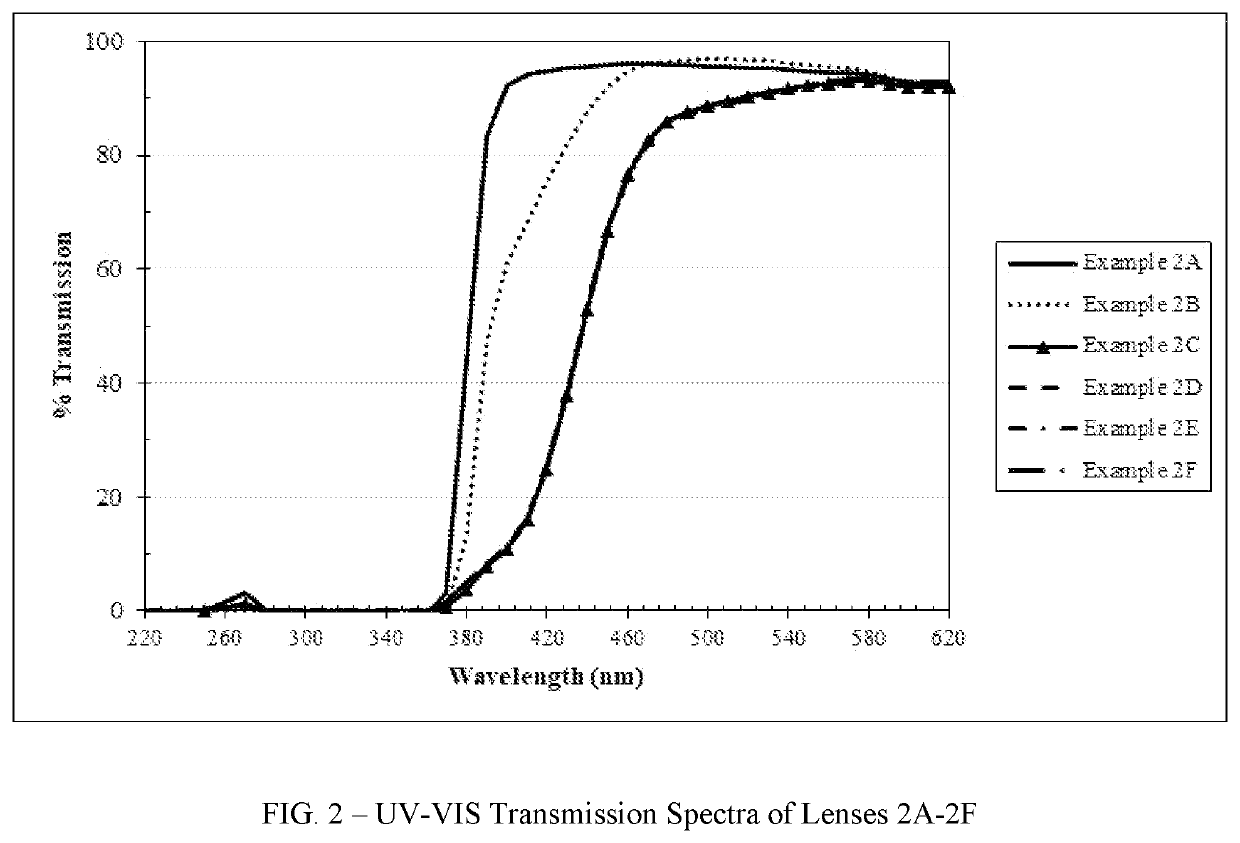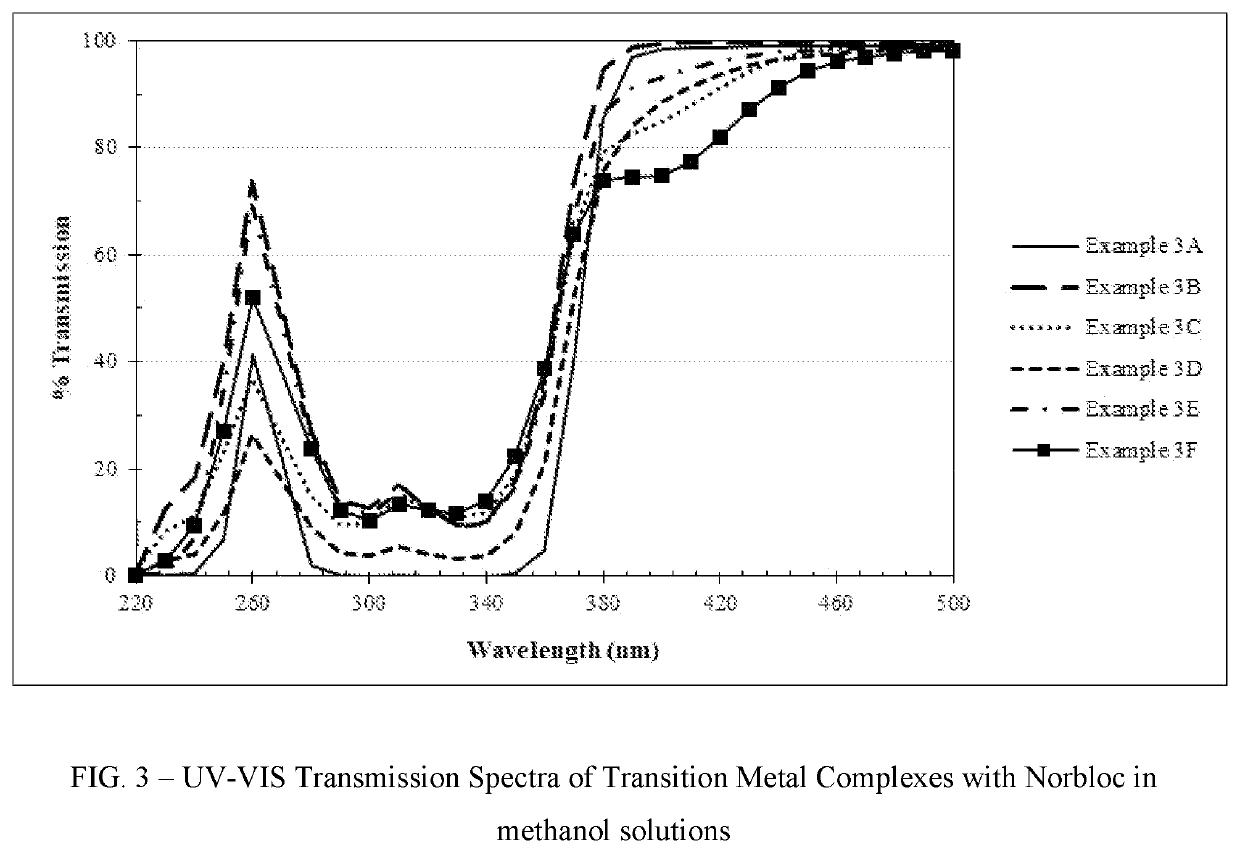Ophthalmic devices containing transition metal complexes as high energy visible light filters
a transition metal complex and high-energy visible light technology, applied in the field of ophthalmic devices containing heterocyclic ligands complexed with, can solve the problems of ineffective protection of the back of the eye, cellular damage, visual discomfort or circadian rhythm disruption,
- Summary
- Abstract
- Description
- Claims
- Application Information
AI Technical Summary
Benefits of technology
Problems solved by technology
Method used
Image
Examples
example 1
[0178]Thirty senofilcon A contact lenses (1A) were placed in a jar containing 2 mM copper (II) chloride solution in packing solution and rolled on a jar roller for about half an hour. The color of the lenses became yellowish brown within 5 minutes. The lenses were rinsed in deionized water, followed by packing solution. The lenses (1B) were then inspected for defects, packaged in vials with packing solution and sterilized by autoclaving at 121° C. for about 30 minutes. The UV-VIS transmission spectra and mechanical properties were then measured for lenses 1A and 1B. Table 1 summarizes the transmission characteristics of lenses 1A and 1B. FIG. 1 shows the transmission spectra of lenses 1A and 1B. Table 2 summarizes the mechanical properties of lenses 1A and 1B.
[0179]FIG. 1 and Table 1 indicate a significant reduction in transmission of about 64% at 400 nm and about 61% in the 380-420 nm range in lens 1B as the result of complexation between copper (II) ions and the pendant benzotriaz...
example 2
[0180]Senofilcon A contact lenses suspended in packing solution containing 2 mM copper (II) chloride were placed in an oven at 90° C., and lenses were removed after 0, 5, 10, 20, 30 and 50 minutes (lenses 2A-2F, respectively). The removed lenses were rinsed in deionized water and then in packing solution before spectra were obtained. The UV-VIS transmission spectra of the lenses at different time points were measured. FIG. 2 shows the time sequence of UV-VIS transmission spectra. Table 3 summarizes the transmission characteristics of lenses 2A-2F.
[0181]Both FIG. 2 and Table 3 demonstrate that the complexation between the copper (II) ions and pendant benzotriazole groups of Norbloc had reached an equilibrium in about 10 minutes under the experimental conditions. By that time, there were significant reductions in transmission across the entire visible range as well as HEV, UV-A, and UV-B.
TABLE 3Time Sequence of UV-VIS Transmission SpectraWavelengthEx. 2AEx. 2BEx. 2CEx. 2DEx. 2EEx. 2FC...
example 3
[0182]0.2 mM solutions in methanol of silver acetate, copper (II) chloride, iron (III) sulphate, zinc iodide, chromium (III) nitrate, and Norbloc (3A) were prepared. For each metal ion, 2.5 mL of salt solution was mixed with 5.0 mL of Norbloc solution to provide a 1:2 molar ratio of metal ion to Norbloc. The different mixtures were labelled as follows: silver acetate mixture (3B), copper (II) chloride mixture (3C), iron (III) sulphate mixture (3D), zinc iodide mixture (3E), chromium (III) nitrate mixture (3F). The resulting solutions stood at ambient temperature for at least twelve hours (overnight). The UV-VIS transmission spectra of these mixtures 3A-3F were then obtained. FIG. 3 shows how the UV-VIS transmission spectra varied with the type of transition metal ion present in the solution. Table 4 summarizes the UV-VIS transmission characteristics of mixtures 3A-3F.
TABLE 4UV-VIS Transmission SpectraWavelengthEx. 3BEx. 3CEx. 3DEx. 3EEx. 3FCategoryRange (nm)Ex. 3A(Ag)(Cu)(Fe)(Zn)(Cr...
PUM
| Property | Measurement | Unit |
|---|---|---|
| transmittance | aaaaa | aaaaa |
| transmittance | aaaaa | aaaaa |
| transmittance | aaaaa | aaaaa |
Abstract
Description
Claims
Application Information
 Login to View More
Login to View More - R&D
- Intellectual Property
- Life Sciences
- Materials
- Tech Scout
- Unparalleled Data Quality
- Higher Quality Content
- 60% Fewer Hallucinations
Browse by: Latest US Patents, China's latest patents, Technical Efficacy Thesaurus, Application Domain, Technology Topic, Popular Technical Reports.
© 2025 PatSnap. All rights reserved.Legal|Privacy policy|Modern Slavery Act Transparency Statement|Sitemap|About US| Contact US: help@patsnap.com



